“Txotx,” bellows the cider master. His notice-slash-command is acknowledged by the cider house guests, who begin to fall in line behind him. They follow the cider master—txotxero—to one of the dozens of massive chestnut barrels holding thousands of liters of sidra (cider).
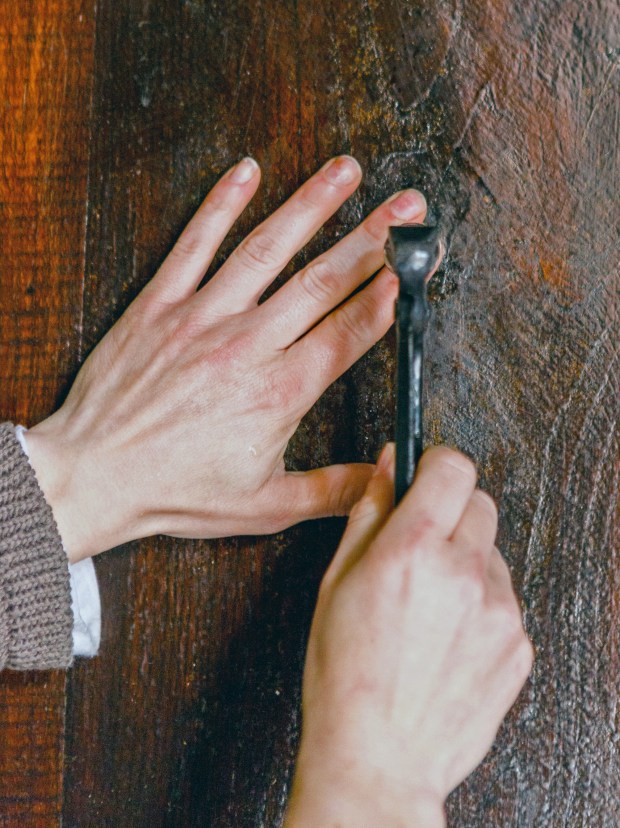
The txotxero uses a hybrid tool, a snub-nosed pair of pliers with a mini-hammer head, to remove the golf-tee-like stopper of the barril. The cider shoots out of a hole no bigger than a few millimeters into a guest’s glass, which is held almost perpendicular to the stream of cider in order to “break” and oxygenate the liquid. More than a dozen people wait in line. Each person takes only what they are going to drink at one time—about as much as a sizeable gulp. You can go back and txotx as many times as you like, but filling your glass is seen as disrespectful. The custom is to take a small amount so the cider stays fresh.
Basque sidra has little in common with English or American cider apart from being made from apples. The Basque cider “crush” takes place in October, when truckloads of apples are moved by water canal from the truck to the crusher. Their “mosto,” or juice, is extracted and piped into vats to ferment with proprietary yeast strains. The cider is ready within two months.
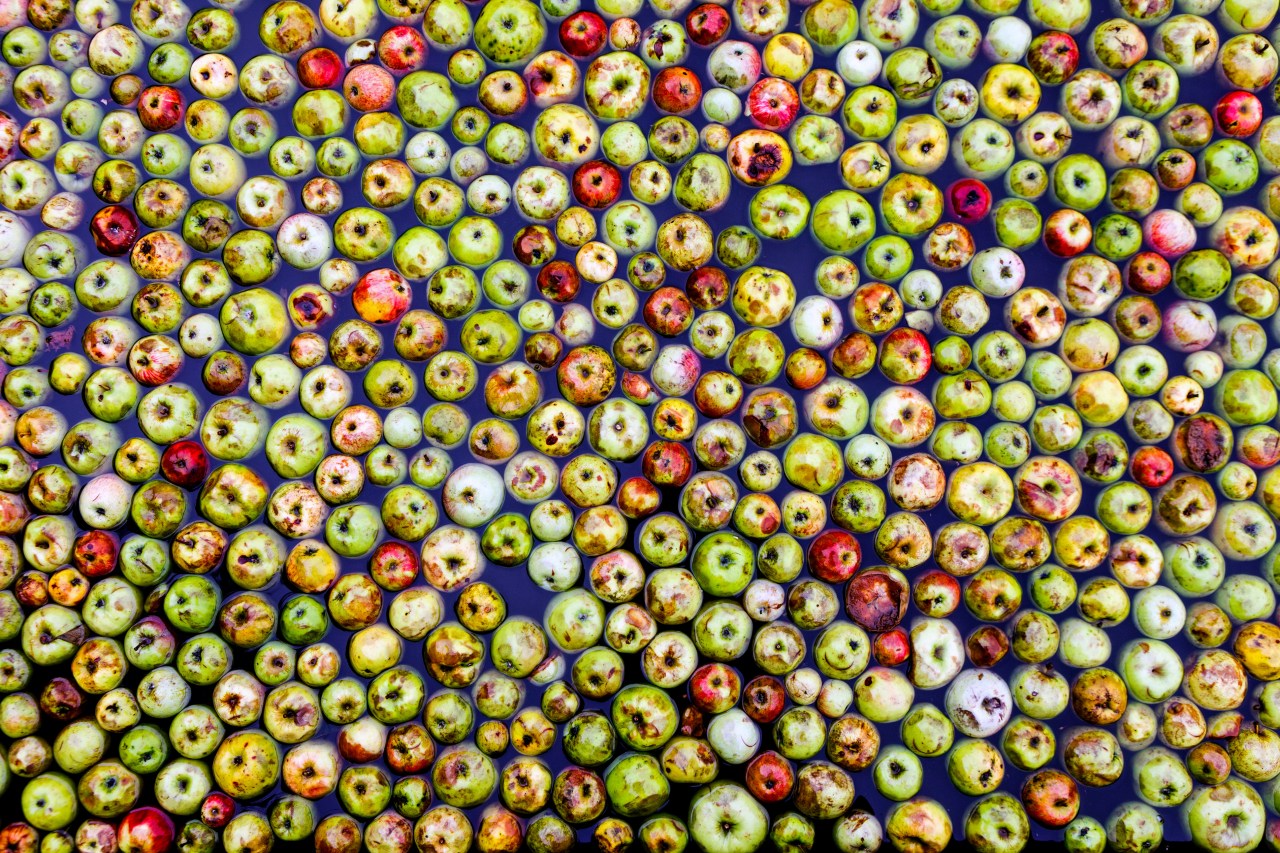
Good sidra will have a hazy, bright, yellowish-green color with the body of a light Hefeweizen beer. Aromas can range from fresh apples to funky ferment, or bright and citric to barnyard haze. Every cider house’s brew tastes different, and even each barrel has its own character. Sidra is fresh and ever-evolving; its low alcohol—around 5 percent ABV—and crisp juice quality means that it doesn’t age well, and should be consumed when it is fresh. Cider reaches its optimal age in the waning weeks of April when it has had time to rest in the barrel but hasn’t been bottled.
The most authentic Basque sidrerias are open from mid-January through the end of April—only during the cold months. Most have no seating and the guests join in an ebb and flow of the txotx, eating family-style at large tables. The menu is the same at every cider house, and typically each is known for at least one of its dishes. The ubiquitous menu includes: pintxo of chorizo cooked in cider, tortilla de bacalao (cod omelet), bacalao alla sidreria (fried cod with caramelized peppers and onions), txuleta (dry-aged rib steak), followed by cheese, quince paste, and crack-your-own walnuts for dessert.
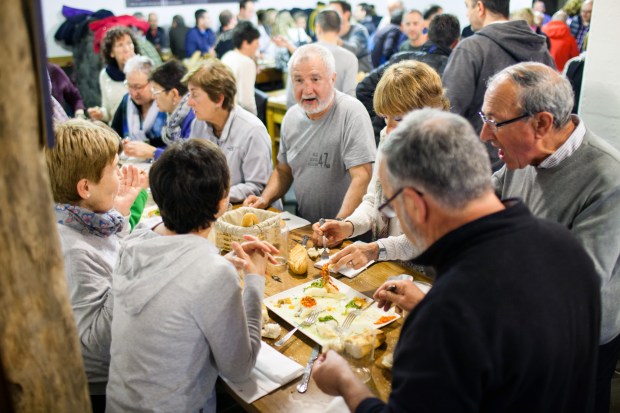
No guest receives their own plate; each chooses food off the platter it is served on. It’s communal, fun, familial, and unique to the Basque region. During sidreria season, cider houses are often dominated by locals, evidenced by the majority of guests speaking Basque, not Spanish. A tourist may fear they won’t be welcomed, but this couldn’t be further from the truth. The willingness to share and teach the tradition of the cider house to foreigners is ever apparent. Basques take pride in knowing that guests from afar have come to their slice of the world for this experience.
Here is a list of three great sidrerias renowned for both cider and food.
Zapiain
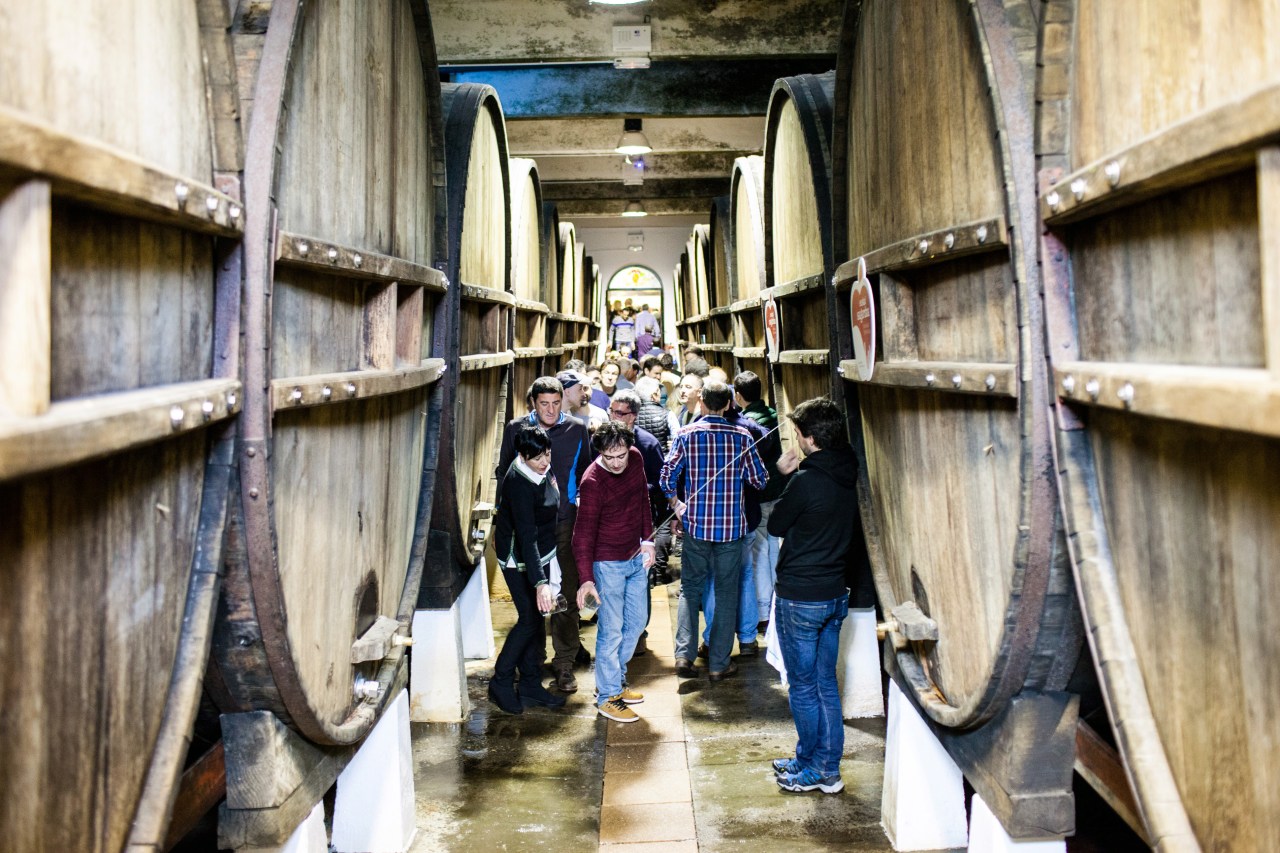
One of the best is Zapiain, located on the edge of Astigarraga, a tiny town located less than 10 minutes south of San Sebastián and the capital of Basque sidra country. The sidra is made by a passionate young man named Egoitz Zapiain who labors extensively to create a consistent, interesting flavor. While it’s a large operation relative to other cider houses, it is still family-owned and operated. The guys who deliver cider during the day man the grill at night. The patriarch of the cider house runs a cider empire but oversees service every night. The sons who handle the commercial side of the business run food and bus tables.
All of the food at Zapiain is excellent, but the most special dish is the tortilla de bacalao. Theirs is loosely scrambled with gobs of caramelized onions, extra virgin olive oil, parsley, and cayenne pepper. This is the tortilla that all other tortillas wish they could be. It’s a simple and perfect marriage of flavor, from the sweet sinewy onions to the mild heat of cayenne. It is quite possibly the best tortilla in Spain.
Zapiain
Location: Calle de Nagusia, 96, 20115 Astigarraga, Gipuzkoa
Contact: (+34) 943 33 00 33
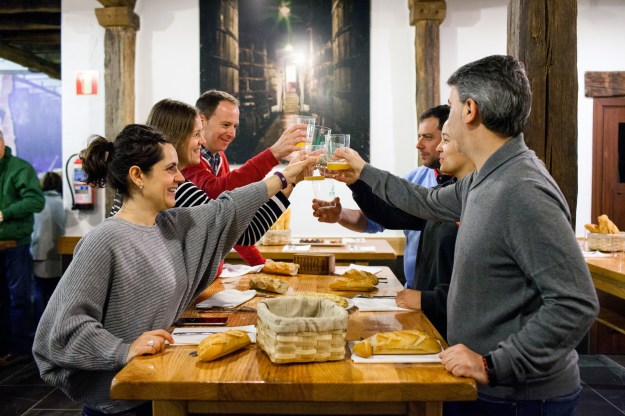
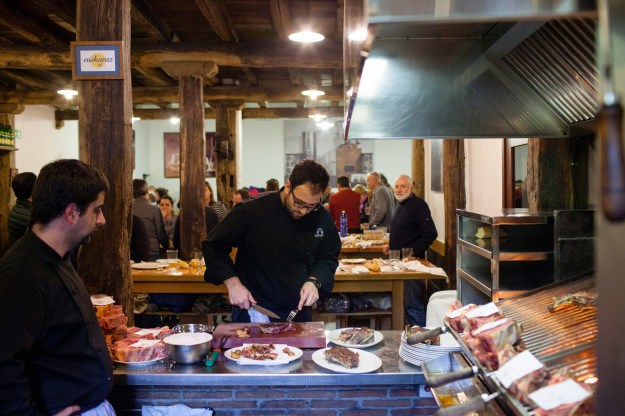
Rufino
Going to Rufino feels like being let in on a secret. Their production of cider is extremely low compared with other cider houses, so their bottled goods are a rare find. This scarcity makes going to Rufino that much more rewarding. And not only is their cider some of the best in the region, but their food delivers on every level. Some sidrerias excel in one or two dishes of the traditional menu, every one of Rufino’s dishes is flavorful at the highest level, from their tortilla to the bacalao a la sidreria and txuleta.
Rufino
Location: Akarregi Ind., 7, 20120 Hernani, Gipuzkoa
Contact: (+34) 943 55 27 39
Zelaia

Down the road in Hernani is Zelaia, another family-owned sidreria. As soon as you enter the restaurant, run by three sisters, you will understand what their house specialty is. Through a window, you can watch the grill man (asador) making steaks for more than a hundred people. There are shelves full of beef waiting to be seared on the glowing coals. Just like a steak shouldn’t be over-wrought or over-thought, nor should an explanation of it. It’s just a dry-aged, perfectly seared steak, served rare with a judicious amount of flaked sea salt.
Zelaia
Location: Barrio Martindegi, 29, 20120 Hernani, Gipuzkoa
Contact: (+34) 943 55 58 51
TXOTX!